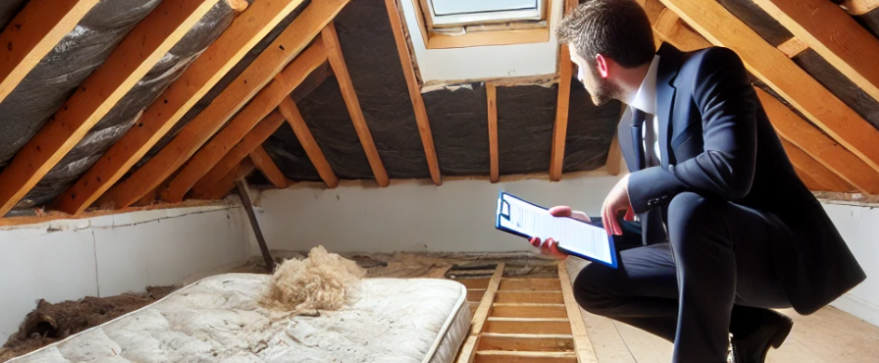Topics: Building Survey - Asbestos - Defects
Identifying asbestos in UK homes: The importance of RICS home surveys
28 July 2023
Author: Richard Peck
3 min read
Introduction
Asbestos, once hailed as a miracle material for its fire-resistant and insulating properties, has proven to be a silent and deadly threat. Exposure to asbestos fibres can lead to severe health issues, including lung cancer, mesothelioma and asbestosis. With its use widespread in UK homes until it was banned, the material remains a concerning issue. This article explores the dangers of asbestos, its prevalence in homes, and the crucial role of RICS Home Surveys in identifying this hazardous material.
Asbestos is a naturally occurring mineral which was widely used in the construction industry due to its insulating, heat-resistant and durable qualities. The material is highly fibrous, and when it becomes airborne, it poses a significant health risk. Inhalation of asbestos fibres can lead to the development of severe respiratory diseases, some of which can take decades to manifest (typically between 15 and 60 years).
There are several types of asbestos, including white (chrysotile), blue (crocidolite), and brown (amosite). Each type has varying danger levels, with blue and brown asbestos being the most lethal due to their needle-like fibres. The UK banned the use of blue and brown asbestos in the mid-1980s, while white asbestos was banned in 1999. Despite these bans, asbestos-containing materials have been found in homes constructed after 1999, as some tradesmen used up existing stocks. From my own personal experience, I have known of a home built as recently as 2005, which contained asbestos fibres in textured ceiling finishes.
To protect residents from asbestos exposure, the UK has implemented legislation regarding the management and removal of asbestos-containing materials. The Control of Asbestos Regulations 2012 outlines the responsibilities of duty holders in non-domestic properties. In homes, the duty to manage asbestos falls on the homeowner or landlord. Compliance with these regulations is vital to ensure the safety of occupants and visitors.
Common areas to find asbestos in UK homes
Asbestos can be found in various parts of UK homes, especially those constructed before the 21st century. Some common areas where we tend to find asbestos-containing materials include:
Insulation Boards: Asbestos insulation boards were widely used for fireproofing and insulation purposes.
Lagging: Asbestos lagging was commonly applied to pipes and boilers for insulation.
Sprayed Coatings: Asbestos spray-on coatings were used for fire protection in structural elements.
Asbestos Cement Products: Roofing sheets, gutters, and downpipes often contain asbestos cement.
Floor Tiles: Vinyl tiles and adhesives used in older properties might contain asbestos.
Felts: Roofing felts and damp-proof course felts occasionally contain asbestos.
Heating Appliances: Older heating appliances may have asbestos insulation.
This list is by no means exhaustive.
The role of RICS home surveys
When purchasing a property, getting a RICS Level 2 Home Survey or RICS Level 3 Building Survey conducted by qualified surveyors, such as Richard Russell Surveyors, is crucial. These surveys are non-invasive and do not involve laboratory testing, however, RICS surveyors are trained to identify potential risks, including asbestos-containing materials, based on visual inspections and knowledge of common asbestos locations. Surveyors will also make recommendations in their reports on whether certain elements are believed to or likely to contain asbestos fibres and whether these elements are considered to be of high or low risk, depending on their condition and location.
Conclusion
Asbestos continues to be a threat in UK homes, particularly in older properties. Awareness of the dangers of asbestos and the areas where it might be present is essential for homeowners and buyers. RICS Home Surveys offer a valuable tool for assessing the potential risks associated with asbestos-containing materials. If higher-risk items are suspected, engaging a specialist for laboratory testing and removal is the safest course of action.
Here at Richard Russell Surveyors, our surveyors have completed The United Kingdom Asbestos Training Association (UKATA) Asbestos Awareness Course and can appropriately identify and advise on potential asbestos-containing materials and items within our Home Survey reports.
Further insights
12 September 2024
Minimum Energy Efficiency Standards (MEES) vs older homes - A timebomb?
4 August 2023




